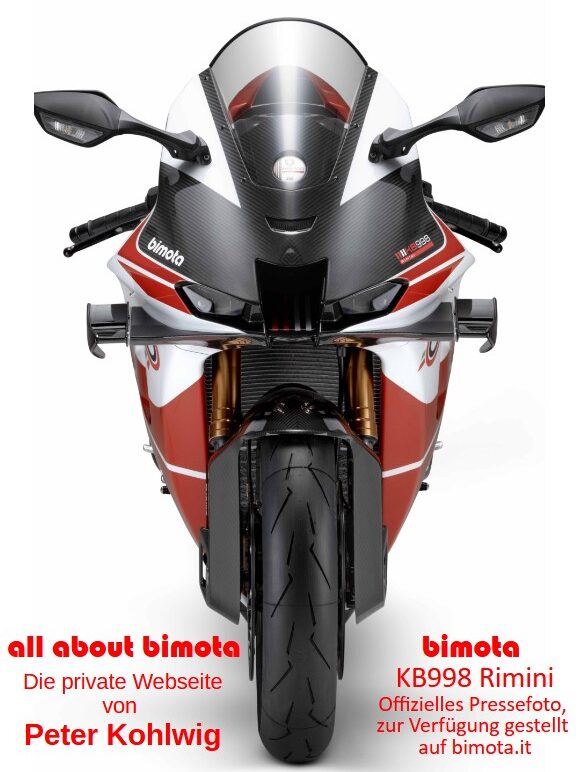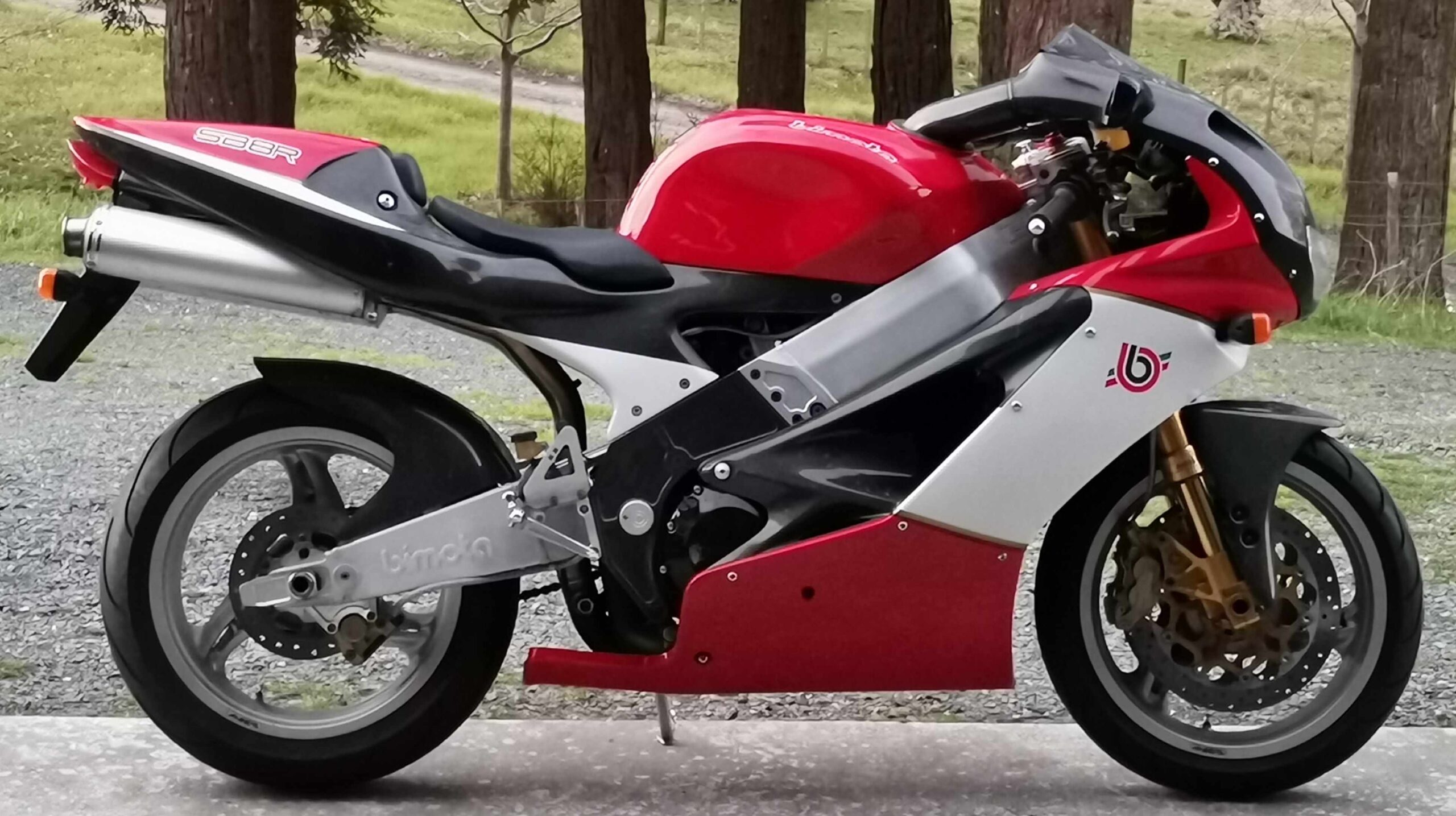
| Designer | Pier Luigi Marconi | First presentation | Milan 1997 |
| Production period | 1998 – 2000 | Production numbers | 150 |
| Power | 102 KW (140 PS) | Displacement | 996 ccm |
| Topspeed | 260 km/h | Weight | wet 194 kg dry 175kg |
| Price | 40.000 DM (1998) | Colours | white / red / gold Speciale: black |
| Technical basis | Suzuki TL 1000 |
Although the Vdue project placed a significant financial strain on Bimota, the prototype of another completely new model, the SB8R, was unveiled at the Milan Motorcycle Show in November 1997. The production version and a special edition called the „Speciale“ were presented at the Munich Motorcycle Show in 1998.
The frame design in the front section is comparable to the concept developed for the SB6, utilizing two aluminum die-cast profiles that connect the steering head and swingarm in a straight line. However, the SB8 features carbon fiber frame plates bolted in the area of the rear engine mount and swingarm bearings. With this lightweight and sturdy composite construction, Bimota once again introduced a technical innovation to the market as the first manufacturer to do so.
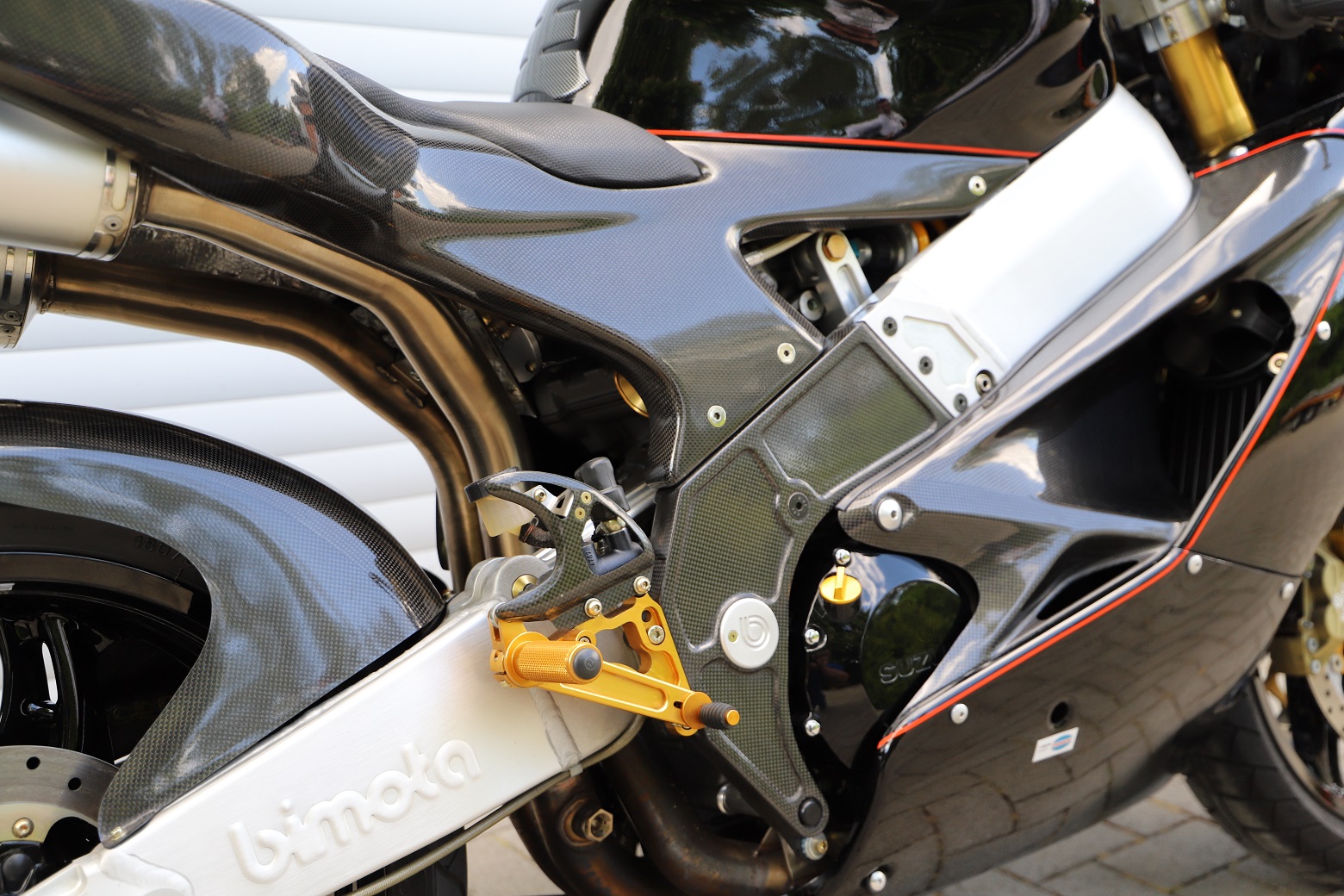
The longitudinally mounted four-valve 90° V-twin engine comes from the Suzuki TL1000R and, combined with the Weber-Marelli injection system installed by Bimota, produces 135 hp at 9500 rpm. A 46 mm Paioli upside-down fork and a central Öhlins shock absorber ensure stable road contact. The bike’s appearance is defined by its self-supporting carbon fiber seat unit, along with other fairing parts, fenders, and air ducts made of carbon. The air ducts, derived from the YB9 SR, may take some getting used to but are designed to increase performance at high speeds through ram-air pressurization.
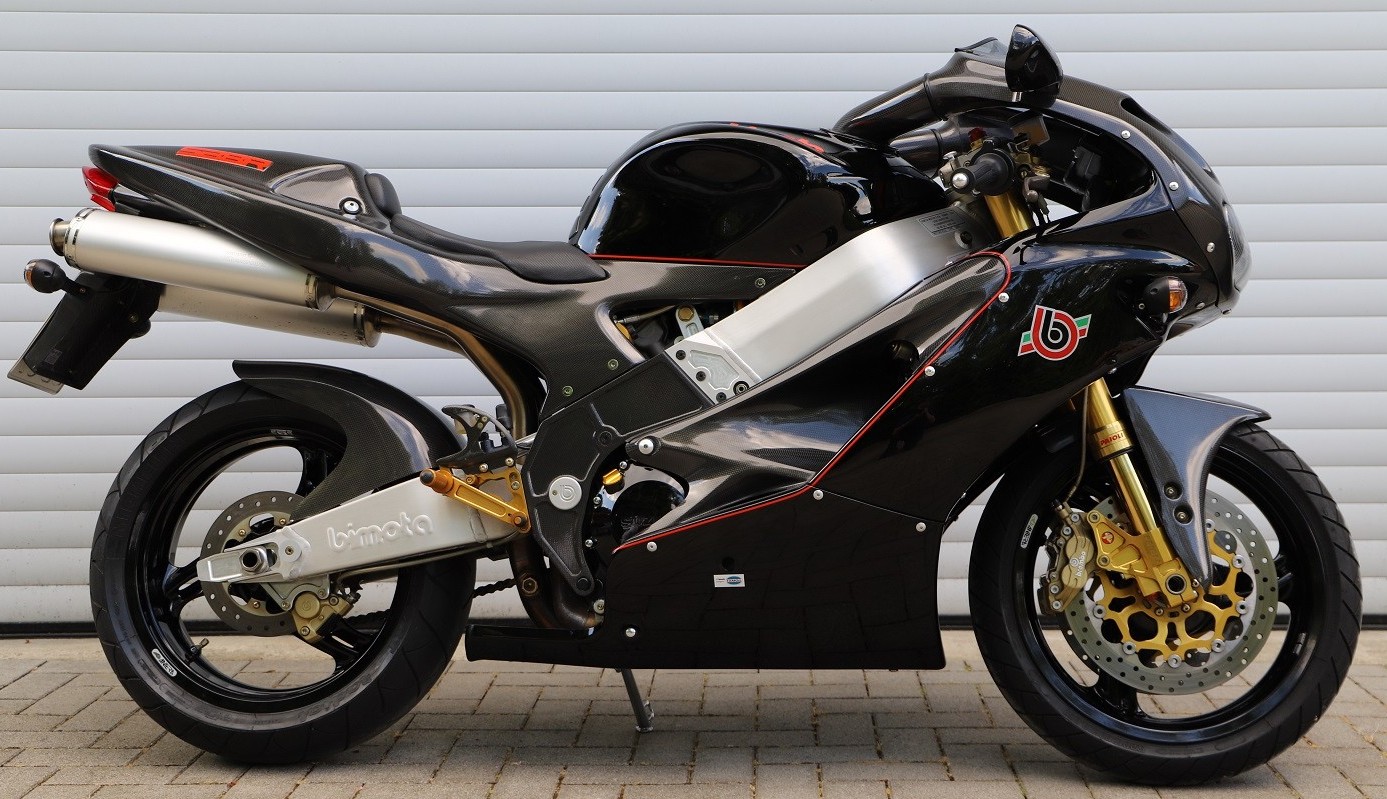
Also unveiled at the 1998 Munich Motorcycle Show, the SB8R Speciale features additional carbon parts and an all-black paint scheme with subtle red accents. It is 2 kilograms lighter but also €3,000 more expensive than the base model.
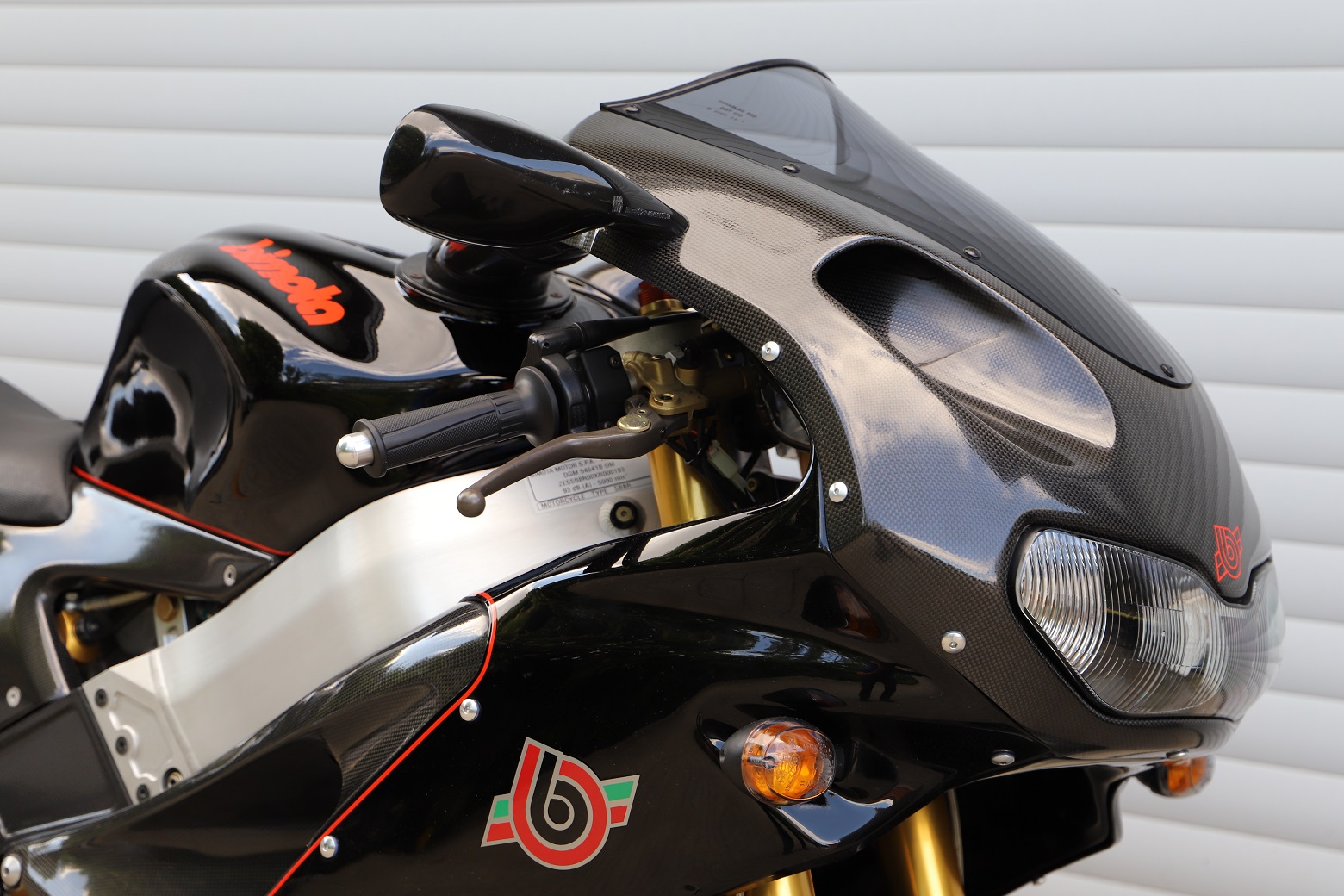
The base version’s paint scheme harks back to the colors of the YB4, Bimota’s 1987 World Championship-winning machine, visually underscoring the company’s ambitions in racing. These ambitions were confirmed in 1999 when the SB8R was used in FIM Endurance World Championship.
In 2000, Bimota even returned to the premier class of motorcycle racing, the FIM Superbike World Championship, with a further developed SB8K. At the start of the season, Australian rider Anthony Gobert achieved an unexpected success, winning his home Grand Prix at Phillip Island. Racing in the rain, he defeated major factory teams from Yamaha, Kawasaki, Suzuki, Honda, and Ducati. However, due to financial difficulties, Bimota ended its involvement later that season.
The magazine Motorrad described the seating position after initial test rides in April 1998 as „very sporty, but not uncomfortable.“ The bike’s handling also received high praise:
“The Bimota steers with extreme precision and remains nimble, even when braking into corners with minimal upright forces. At the apex of a curve – where ground clearance is virtually limitless – it holds its line faithfully and doesn’t deviate, even under aggressive acceleration out of the corner.”

